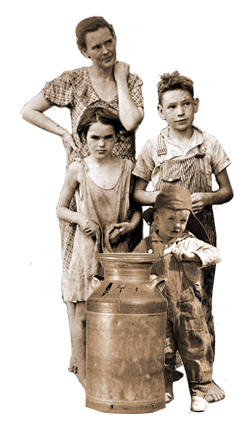Faith and the Dust Bowl
Streaming caravans of homeless farm families crossed the land and set up camps. Hungry, restless, in desperate need of money and willing to do any job, this migration pushed the limits of the few government subsidy programs put into place for aid and created social strife in many large American cities.
In order to endure the hardship, the people of the Dust Bowl looked to religion to explain the catastrophic economic and ecological events forced upon them. While communities struggled for survival, religion became an important source of social continuity. As population throughout the region declined, church membership increased. Religion offered solace to suffering families and promised a hopeful future while claiming that money and other material goods were not essential to achieve salvation. Activities related to religion were popular, inexpensive and provided the social component needed to help citizens through the difficult times.
Streaming caravans of homeless farm families crossed the land and set up camps. Hungry, restless, in desperate need of money and willing to do any job, this migration pushed the limits of the few government subsidy programs put into place for aid and created social strife in many large American cities.
In order to endure the hardship, the people of the Dust Bowl looked to religion to explain the catastrophic economic and ecological events forced upon them. While communities struggled for survival, religion became an important source of social continuity. As population throughout the region declined, church membership increased. Religion offered solace to suffering families and promised a hopeful future while claiming that money and other material goods were not essential to achieve salvation. Activities related to religion were popular, inexpensive and provided the social component needed to help citizens through the difficult times.



